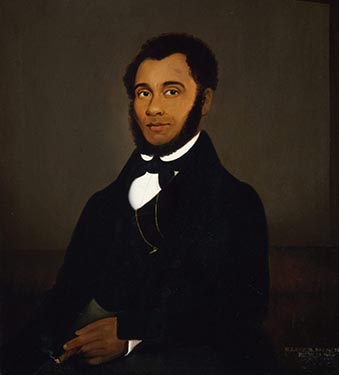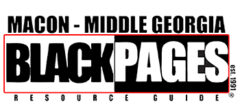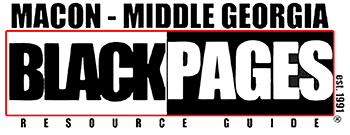“Unnamed Figures: Black Presence and Absence in the Early American North” is on view at the American Folk Art Museum through March 24, 2024.

William Lawson, 1843 (oil on canvas) by Prior, William Matthew (1806-73); 76.8×64.1 cm; Shelburne Museum, Vermont, USA; © Shelburne Museum ; Museum purchase, acquired from Maxim Karolik.
Comprised of approximately 125 works, including key loans of over-mantel paintings, portraits, needlework, works on paper, photographs, and other vernacular forms, the show will focus on representations of Black figures in New England and the Mid-Atlantic from the late 17th through early 19th century. The exhibition challenges conventional narratives that have minimized early Black histories in the North, revealing the complexities and contradictions of the region’s history.
Despite their vital importance, the experiences and contributions of Black figures in the Northeast have often been ignored or minimized. As a reflection of this, the content of the exhibition is also shaped by considerations of absence. By incorporating works that do not feature Black figures, in spite of historical Black presence within the same spaces, the exhibition will encourage visitors to consider how this erasure of marginalized voices continues to shape our understanding of the past.
“This exhibition and accompanying book fill a crucial gap in our understanding of early American history and are reflective of the deep level of research led by curators Emelie Gevalt, RL Watson, and Sadé Ayorinde,” said Jason T. Busch, Becky and Bob Alexander Director & CEO at AFAM. “We are grateful to our lenders, funders, and staff for their support in this important endeavor.”
The exhibition’s interpretation delves into themes including slavery, resistance, community-building, and memory-making to develop a deeper understanding of the experiences of Black individuals and the reasons their stories have often gone underrepresented. The curatorial team has gathered a wealth of contextual information about the lives of Black people in this region. Given the ultimate limits of archival documentation about specific people, the exhibition will incorporate additional forms of interpretation, including descendant oral histories and responses from contemporary Black artists.
“Unnamed Figures” features loans from over three dozen organizations and private collections, including a selection from the Burns Collection and Archive of more than 50 early photographic portraits of Black subjects. Juxtaposed with the other works in the exhibition that evoke absence, these tintypes and cabinet cards from the Burns Archive will make for a powerful display of Black creative agency in the nineteenth century.
Publication:
The contributors to the forthcoming book, Unnamed Figures: Black Presence And Absence in the Early American North, are scholars and researchers with expertise in American art history, material culture, African American history and literature, and other related topics. The 300-page publication draws on years of research and archival work. It will contextualize the exhibition as well as expand upon its themes, including how Black representations may have been further marginalized or misconstrued by collectors of early American art and material culture.
About The American Folk Art Museum:
Founded in 1961, the American Folk Art Museum engages people of all backgrounds through its collections, exhibitions, publications, and programs as the leading forum shaping the understanding and appreciation of folk and self-taught art across time and place. It is located at 2 Lincoln Square (Columbus Avenue at West 66th Street), New York, NY. Admission to the Museum is free.


